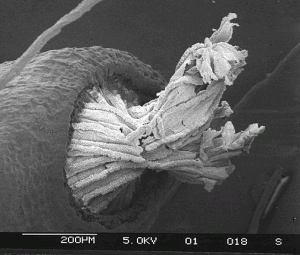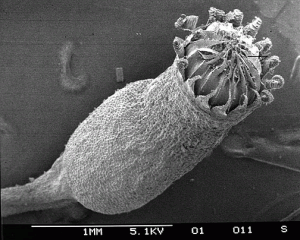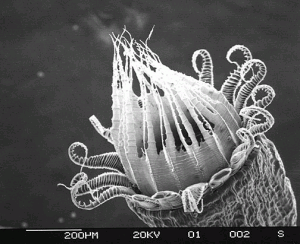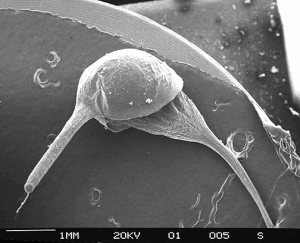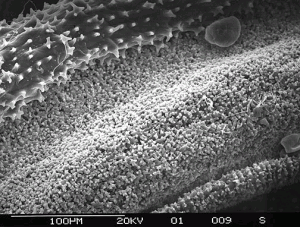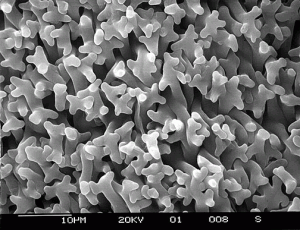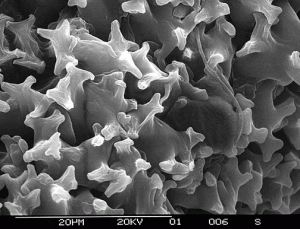Diphyscium foliosum
The peristome teeth of Diphysicium foliosum are unique to Bryopsida. The teeth are joined together, like a pleated skirt of cells. The teeth do not move hygroscopically (many Bryopsids have hygroscopically moving teeth).
Eurhynchium praelongum
Eurhynchium praelongum has beautiful peristome teeth. The peristome is composed of an exostome and an endostome. The exostome is composed of cell fragments and moves hygroscopically, aiding in spore dispersal.
The ornamentation and pattern of the exostomal teeth aids in species identification. Eurhynchium praelongum has the pattern
The endostomal teeth are forked and do not move hygroscopically. This inner row of teeth aids in spore retention so that the spores are not all dispersed at once. The endostomal teeth may also have different patterns on the outer surface.
Funaria hygrometrica
The sporangium matures within protective female tissue, known as the calyptra. The calyptra will fall off and the underlying mature sporangium will be revealed.
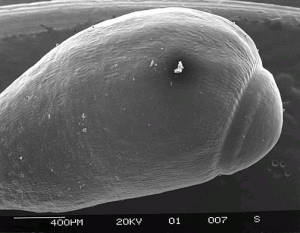 The sporangium has an operculum at its apex, the operculum encloses the peristome teeth. Funaria hygrometrica has an annulus, a ring of tissue located between the sporangial body and operculum. The annulus aids in holding the operculum onto the sporangium. When the operculum is ready to be released, the annulus will peel away and the operculum will fall off.
The sporangium has an operculum at its apex, the operculum encloses the peristome teeth. Funaria hygrometrica has an annulus, a ring of tissue located between the sporangial body and operculum. The annulus aids in holding the operculum onto the sporangium. When the operculum is ready to be released, the annulus will peel away and the operculum will fall off.
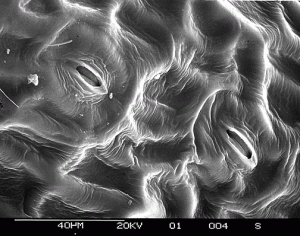 Stomata, located at the base of the sporangium, are present in bryophytes and vascular plants. When the slits of the stomata are open, Carbon dioxide enters the sporangium and is used in photosynthesis. When the slits are closed, stomata act in water loss prevention. Guard cells typically surround stomata, however in this species there are no guard cells.
Stomata, located at the base of the sporangium, are present in bryophytes and vascular plants. When the slits of the stomata are open, Carbon dioxide enters the sporangium and is used in photosynthesis. When the slits are closed, stomata act in water loss prevention. Guard cells typically surround stomata, however in this species there are no guard cells.
Tortula muralis
Pappillae are located on the dorsal and ventral surfaces of leaves. The pappillae are more dense on the dorsal surface of the leaf.
The bumpy pappillae provide increased surface area for water to cling too.
Pappillae are composed of a thick and waxy cuticle helping in the retention of water. The nooks and crannies the pappillae provide give many spaces for water to stay.

